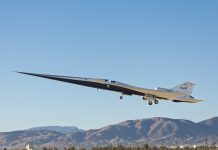Indian Army soldiers had another confrontation with the Chinese PLA troops in the no-patrolling zone at Galwan Valley in Eastern Ladakh in the first week of May, according to The Hindu.
However, there was no major clash between the soldiers and both sides withdrew promptly.
A no-patrolling zone stretching to around three kms, around 1.5 km each, on either side of the clash site near the Y-junction of the Galwan Valley, was designed after the deadly clash between Indian and Chinese PLA soldiers last year.
The June 15, 2020, clash at Galwan Valley between Indian and Chinese troops was the deadliest conflict between the two nuclear-armed nations since the 1962 war. India lost 20 of its soldiers while China took months before acknowledging the deaths of four PLA soldiers, a claim many experts in India dispute.
Although no guns or ammunition were used in the clashes at Galwan Valley due to a long-standing pact between the two nations, the two sides brutally attacked each other with stones and nail-studded clubs.
“After the no-patrolling zones were created last year, the two sides occasionally conduct reconnaissance to see if the other side has crossed the line. The patrols are sent at different times. On a particular day, the Indian and Chinese patrols reached the area at the same time, a minor face-off happened but they returned quickly,” The Hindu quoted an official.
After multiple rounds of diplomatic and military negotiations, both Indian and Chinese PLA soldiers finally disengaged in February. The official added that the PLA still has camps beyond the no-patrolling zone and there has not been any decrease in troop deployment, despite the disengagement pact.
Grave Error
Earlier, in an interview with The EurAsian Times, Maj. Gen. Raj Mehta (retired), said: “India had an operational and tactical advantage over China in the Pangong Tso region which could have made it easier for us to negotiate peace at the border with them.”
After withdrawing from the Pangong Tso, China declined to pull back from other friction points like Gogra, Hot Springs, Demchok, and Depsang Plains, raising a major concern for India.
Calling it a “disaster for India”, General Mehta said that “vacating certain key-heights at Pangong Tso was a grave mistake.”
The Chinese PLA recently deployed long-range precision strike-rockets near the Indian border, as earlier reported by The EurAsian Times. China also deployed a ‘Combined Air Defense System’ in the Western Theater Command.
In response, Maj. Gen. SB Asthana (Retd) told the media that the Indian Army is also well-prepared as it has not lowered the guards and has stationed an equal number of troops and weaponry as those of the Chinese.
Indian Army Rejects
Indian Army has meanwhile has dismissed the reports of any kind of face-off taking place in the Galwan Valley between the Army and China’s PLA in early May.
An article titled "Minor face-off with Chinese troops in Galwan Valley" published in The Hindu on 23 May 2021 has been taken note of. (1/4) pic.twitter.com/kBP5K3fvJW
— ADG PI – INDIAN ARMY (@adgpi) May 23, 2021
The Indian Army asserted that there was no clash and also said that the sources claiming otherwise could be trying to derail the ongoing de-escalation process.
In a series of tweet, the Indian Army said
An article titled “Minor face-off with Chinese troops in Galwan Valley” published in The Hindu on 23 May 2021 has been taken note of.
It is clarified that NO such minor face-off has taken place between Indian and Chinese troops at #Galwan Valley in Eastern Ladakh in the first week of May 2021 as reported.
The article seems to be inspired by sources who may be trying to derail the ongoing process for the early resolution of issues in Eastern Ladakh.
#Media professionals are requested to clarify actual versions/positions on incidents involving the Indian Army from authorized sources in the #IndianArmy and not base reports on un-corroborated inputs from third parties.




